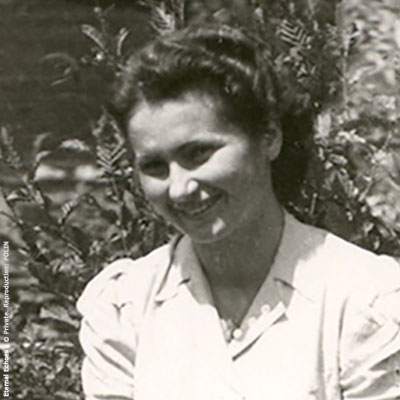I was there.
After the outbreak of war and the creation of the ghetto the family had to leave their flat and move to the ghetto. They lived there at 39 Brzezińska St. For some time, Halina’s father was a postmaster in the ghetto.

Halina Elczewska (1919-2013), Poland
Ghettoization
A ghetto is created in Łódź, which completely changes the living conditions of Łódź Jews.
1) Listen to, as she talks about depriving her and her close relatives of rights that non-Jewish inhabitants of Łódź still had. Answer the questions.
1a. Define “stigmatization”.
1b. How Halina describes the feelings associated with the armband she had to wear?
1c. What did the armband change for Halina? (Did Halina experience antisemitism before the war? Who were her friends? Does it say anything about the atmosphere in pre-war Łódź?)
1d. What did change for the Halina’s family, when they were forced to move to the ghetto?
1e. Was their situation any different from other families? Why?
Hunger
Hunger is a sensation that entierly dominates inhabitants of the Lodz ghetto. Getting food is the most difficult task.
2) Listen to Halina as she talks about her parents’ suffering. Answer the questions.
2a. How do you imagine the difference between hunger and the hunger psychosis?
2b. Is it possible to get accustomed to hunger?
2c. What do you do with potato peelings? What did people do with it in the ghetto?
2d. What is your favourite soup? What do you need to make it? What were the ingredients of the ghetto soup described by Halina?
2e. How did people get food in the ghetto? What did they eat?
2f. Why the situation of the foreign Jews was more difficult?
 Choose Language
Choose Language  svenska
svenska  română
română  polski
polski  Lithuanian
Lithuanian  Deutsch
Deutsch  magyar
magyar 

